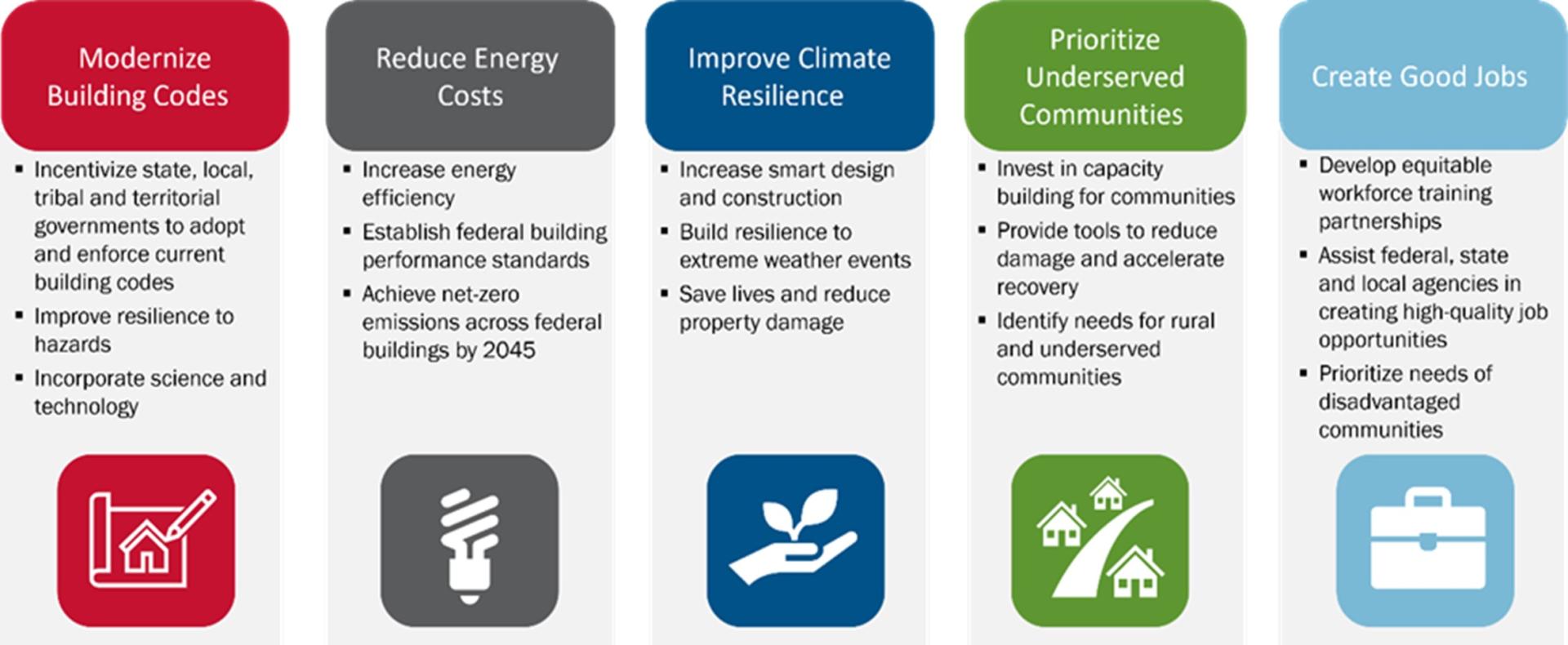In March 2022, the White House National Climate Advisor charged the interagency Mitigation Framework Leadership Group (MitFLG) with spearheading the National Initiative to Advance Building Codes (NIABC). The NIABC was established to help communities adopt the latest consensus building and energy codes and standards; improve climate resilience; and reduce energy costs to make the nation more resilient. The MitFLG stood up the Building Codes Task Force (BCTF) in 2022 to lead the NIABC Effort.
The NIABC promotes sustainable changes that are designed to protect communities regardless of social, economic, or regional challenges. The NIABC extends the protections of consensus-based building codes and energy codes to all U.S. communities without creating a new code or standard and directs federal programs that support building code and energy code activity to enhance outreach, technical assistance, and capacity for construction in states, cities, tribal entities, and territories.
In establishing the BCTF, the MitFLG outlined Recommendation 3.1 of the Investment Strategy to encourage communities to adopt and enforce up-to-date building codes, citing the 2018 National Institute of Building Sciences (NIBS) study showing that building codes save $11 for every $1 invested. The BCTF, which is currently comprised of 20 federal agencies and one SLTT member, was tasked to conduct a landscape analysis, create federal implementation plans, update and amend programs and guidance, and submit annual progress reports to the White House.
Why Building Codes Are Important
Building codes and adjacent standards govern the way that buildings are designed and built. They are a fundamental part of ensuring a climate resilient America with low energy costs and carbon emissions. The purpose of building codes and above-code standards is to ensure that a storm or natural hazard experienced by a community or impacting a building does not need to become a disaster. A well-built home or building can save lives and serve generations to come if done right and if built in the right location.
Communities that adopt and enforce current, consensus-based building codes at the state and local level ensure that newly constructed and substantially rehabilitated buildings and homes meet baseline resilience and energy efficiency standards – saving lives and substantial post-disaster recovery costs, while lowering energy costs.
NIABC Priorities
During the inaugural NIABC Strategic Planning Offsite on August 9, 2023, the BCTF re-validated the five key NIABC priorities. The BCTF continues to incorporate these priorities in defining objectives each year and developing workstreams based on these objectives. These priorities drive BCTF efforts to advance the initiative and engage the industry and federal partners, as well as state, local, tribal, and territorial (SLTT) communities, in adopting and using the latest consensus codes and standards.

Key Milestones
In June 2022, following the identification of agencies who are most closely connected with the NIABC priorities, 10 federal agencies began developing and submitting Implementation Plans to the White House.
In September 2023, the White House and the Building Codes Task Force developed the NIABC Best Practices Document, titled Best Practices for Climate Resilient Codes and Standards: Federal Assistance Programs For Non-Federal Buildings. This Best Practices Document was referenced by the White House during the September 28 White House Summit on Building Climate Resilient Communities. This guidance document is internal to the federal government.

